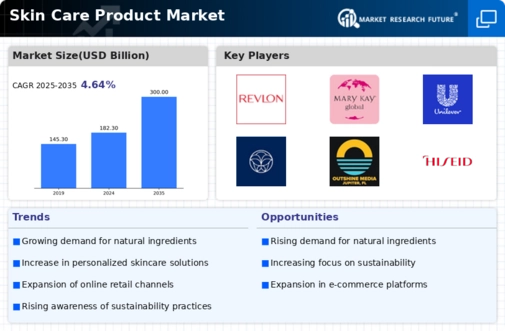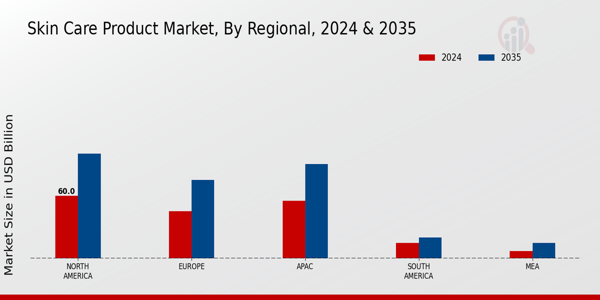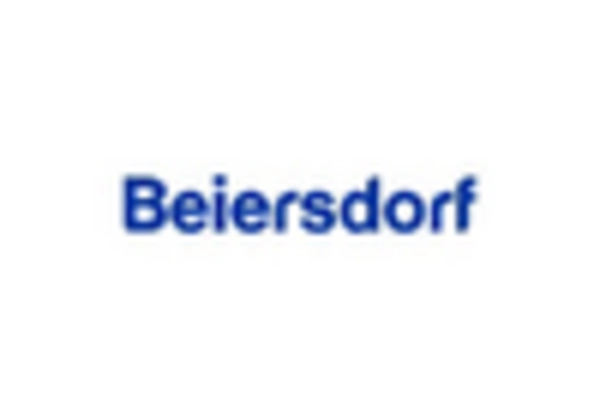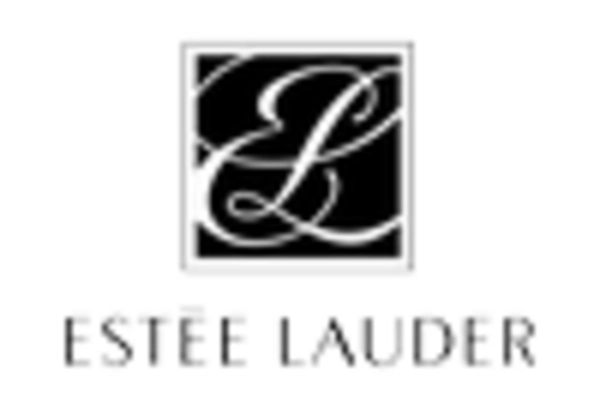Rise of Clean Beauty Trends
The Skin Care Product Market is witnessing a significant shift towards clean beauty, characterized by a preference for products free from harmful chemicals and synthetic ingredients. Consumers increasingly seek transparency in product formulations, leading brands to adopt cleaner, more sustainable practices. This trend is reflected in the growing sales of organic and natural skin care products, which are projected to grow at a compound annual growth rate of around 10% through 2025. The clean beauty movement not only reshapes consumer preferences but also compels manufacturers to innovate and reformulate existing products, thereby impacting the competitive landscape of the Skin Care Product Market.
Growing Demand for Anti-Aging Products
The Skin Care Product Market experiences a notable surge in demand for anti-aging products, driven by an aging population and increasing awareness of skin health. As consumers become more conscious of their appearance, the market for anti-aging creams, serums, and treatments expands. In 2025, the anti-aging segment is projected to account for a substantial share of the overall skin care market, with estimates suggesting it could reach approximately 50 billion dollars. This trend indicates a shift towards products that not only enhance beauty but also promote skin longevity, thereby influencing product development and marketing strategies within the Skin Care Product Market.
Technological Advancements in Skin Care
Technological innovations play a pivotal role in shaping the Skin Care Product Market. The integration of advanced technologies such as artificial intelligence and augmented reality in product development and marketing enhances consumer engagement and personalization. For instance, AI-driven skin analysis tools allow consumers to receive tailored product recommendations, thereby improving customer satisfaction and loyalty. Furthermore, the rise of e-commerce platforms facilitates the distribution of technologically advanced skin care products, contributing to market growth. As these technologies continue to evolve, they are likely to redefine consumer experiences and expectations within the Skin Care Product Market.
Influence of Social Media and Influencers
The Skin Care Product Market is significantly influenced by social media platforms and the rise of beauty influencers. These platforms serve as vital channels for brand promotion and consumer education, allowing brands to reach wider audiences effectively. In 2025, it is estimated that over 70% of consumers will rely on social media for product recommendations, highlighting the importance of digital presence for skin care brands. Influencers often shape consumer perceptions and purchasing decisions, leading to increased sales for featured products. This trend underscores the necessity for brands to engage with social media strategies to thrive in the competitive landscape of the Skin Care Product Market.
Increased Focus on Men’s Grooming Products
The Skin Care Product Market is experiencing a notable increase in the focus on men's grooming products, reflecting changing societal norms and attitudes towards male grooming. As more men prioritize skin care, the demand for specialized products such as moisturizers, cleansers, and anti-aging treatments is on the rise. Market Research Future indicates that the men's skin care segment is expected to grow at a compound annual growth rate of approximately 8% through 2025. This shift not only expands the consumer base for skin care brands but also encourages innovation in product formulations tailored specifically for men, thereby diversifying offerings within the Skin Care Product Market.


















Leave a Comment